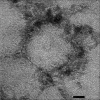Formulation, characterization, and in vitro testing of azelaic acid ethosome-based cream against Propionibacterium acnes for the treatment of acne
- PMID: 31041186
- PMCID: PMC6474161
- DOI: 10.4103/japtr.JAPTR_289_18
Formulation, characterization, and in vitro testing of azelaic acid ethosome-based cream against Propionibacterium acnes for the treatment of acne
Abstract
Azelaic acid is an antiacne drug by inhibiting thioredoxin reductase enzyme of Propionibacterium acnes (P. acnes) that affects the inhibition of bacterial DNA synthesis which occurs in the cytoplasm. Azelaic acid must penetrate through the stratum corneum to the sebaceous tissue and into cytoplasm by passing through thick peptidoglycan of P. acnes. Thus, it is necessary to increase the penetration of azelaic acid that formulated based ethosome. This study using thin-layer hydration method forms an ethosomal suspension with variations of concentration ethanol (30%, 35%, and 40%). Antibacterial activity was conducted using broth dilution method to determine minimum inhibitory concentration (MIC) and minimum bactericidal concentration (MBC). The antibacterial activity of azelaic acid ethosome cream based was compared with the marketed cream (Zelface® cream). Azelaic acid ethosome with 35% ethanol has given best result with entrapment efficiency of 94.48% ± 0.14%. Antibacterial activity to P. acnes showed that azelaic acid ethosome-based cream was given better activity than marketed cream (Zelface® cream). The value of MIC and MBC of azelaic acid ethosome-based cream was 250 μg/ml while the marketed cream (Zelface® cream) was shown MIC of 250 μg/ml and MBC of 500 μg/ml. This study proved that the azelaic acid ethosome-based cream has better antibacterial activity.
Keywords: Antiacne; Propionibacterium acnes; azelaic acid; cream; ethosome; minimum bactericidal concentration; minimum inhibitory concentration.
Conflict of interest statement
There are no conflicts of interest.
Figures
References
-
- Klaus W, Richard A, Dick S. Fitz Patrick's Color Atlas and Sinopsis of Clininal Dermatology. New York: Medical Publishing Division; 2005.
-
- Leyden JJ. Current issues in antimicrobial therapy for the treatment of acne. J Eur Acad Dermatol Venereol. 2001;15(Suppl 3):51–5. - PubMed
-
- West DP, West LE, Musumeci ML, Micali G. Acne vulgaris. In: DiPiro JT, Talbert RL, Yee GC, Matzke GR, Well BG, Posey LM, editors. Pharmacoterapy: A Pathophysiologic Approach. New York: McGraw-Hill; 2005.
-
- Pathak R, Kumar R, Kasama N. Staphylococcus epidermidis in human skin microbiome associated with acne: A cause of disease or defence? Res J Biotechnol. 2013;8:78–82.
LinkOut - more resources
Full Text Sources


